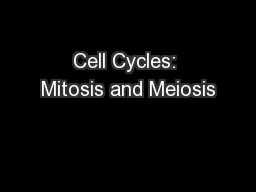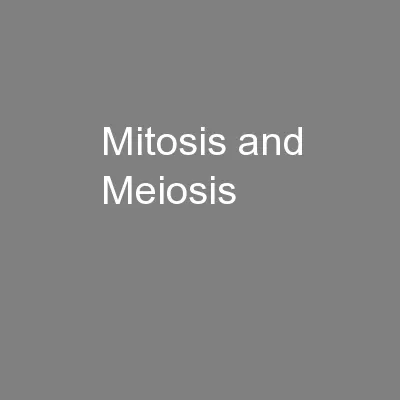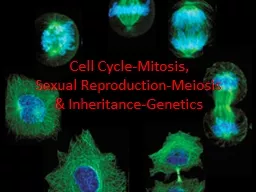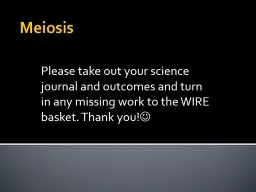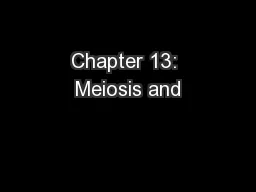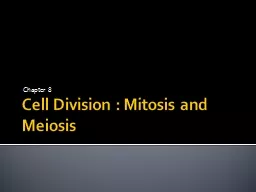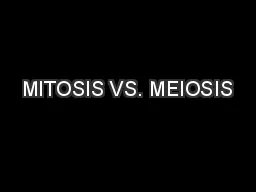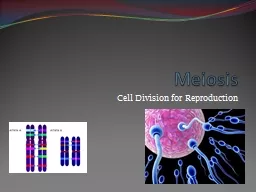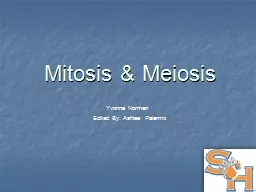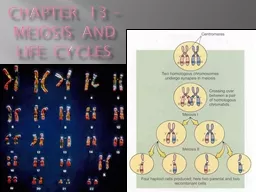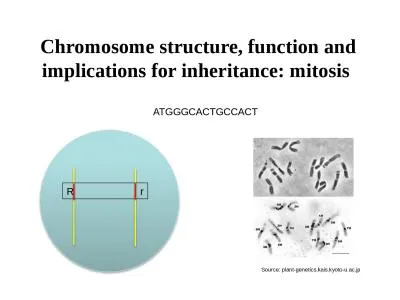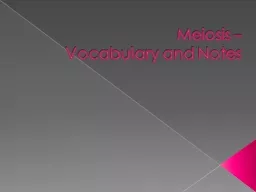PPT-Cell Cycles: Mitosis and Meiosis
Author : cheryl-pisano | Published Date : 2017-08-19
Notebook Page 12 Warm Up amp Spiral 2232017 What is the chemical formula for glucose How many hydrogen atoms are in glucose What is protein synthesis OBJECTIVES
Presentation Embed Code
Download Presentation
Download Presentation The PPT/PDF document "Cell Cycles: Mitosis and Meiosis" is the property of its rightful owner. Permission is granted to download and print the materials on this website for personal, non-commercial use only, and to display it on your personal computer provided you do not modify the materials and that you retain all copyright notices contained in the materials. By downloading content from our website, you accept the terms of this agreement.
Cell Cycles: Mitosis and Meiosis: Transcript
Download Rules Of Document
"Cell Cycles: Mitosis and Meiosis"The content belongs to its owner. You may download and print it for personal use, without modification, and keep all copyright notices. By downloading, you agree to these terms.
Related Documents

